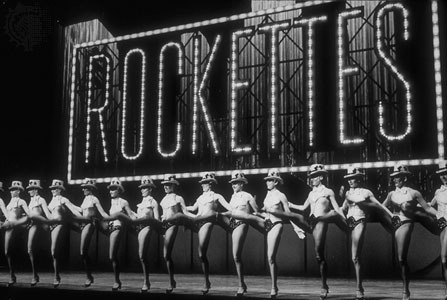- This topic has 0 replies, 1 voice, and was last updated 10 years, 8 months ago by .
Viewing 1 post (of 1 total)
Viewing 1 post (of 1 total)
- You must be logged in to reply to this topic.
Home › Forums and Archive › John Tiller › The Radio City Rockettes Connection
Russell Markert, founder of the Rockettes quoted;
“I had seen the John Tiller girls in the Ziegfeld Follies of 1922,” he reminisced, “If I ever got a chance to get a group of American girls who would be taller and have longer legs and could do really complicated tap routines and eye-high kicks, they’d knock your socks off!”
Many a Tiller girl would be a little offended at this remark as many of the Tiller Ballet and Tap Routines have never been replicated with such precision. However the Rockettes Kick routines today are precision dance at it’s very best, original and real entertainment.
The Rockettes first kicked to life in 1925 as the “Missouri Rockets” and made their show business debut in St. Louis, the realization of a long-time dream of their creator, Russell Markert.
 The Rockettes inspired by The Tiller Girls
The Rockettes inspired by The Tiller Girls
It is known that some of the Tiller Girls and other girls who trained with Mary Read in New York were also involved in the Rockettes in later years. One Girl Lily Smart from Manchester, danced with the Tiller Girls in the UK and Europe and trained at the Manchester School. In 1922 she went with the Tiller’s to Dance in new York. In 1927 she joined the Rockettes and worked with them for many years. (See Dancers Pages) Russell Markert added his own style to the Precision Dance routines; this found its way back to the Tiller girls in the United Kingdom.
Girls that had visited the USA during the late 1930’s and 40’s danced for the Troops and liked the American style of dancing and the costumes with head dresses they saw. American films also showed showgirls and had a big impact on the British audience. From the late 1940’s through the 1970’s the Tiller girls adopted a lot of the American Showgirl styles that could trace their roots back to the “Les Folies-Bergère” in the late 1890’s.
Recent Comments